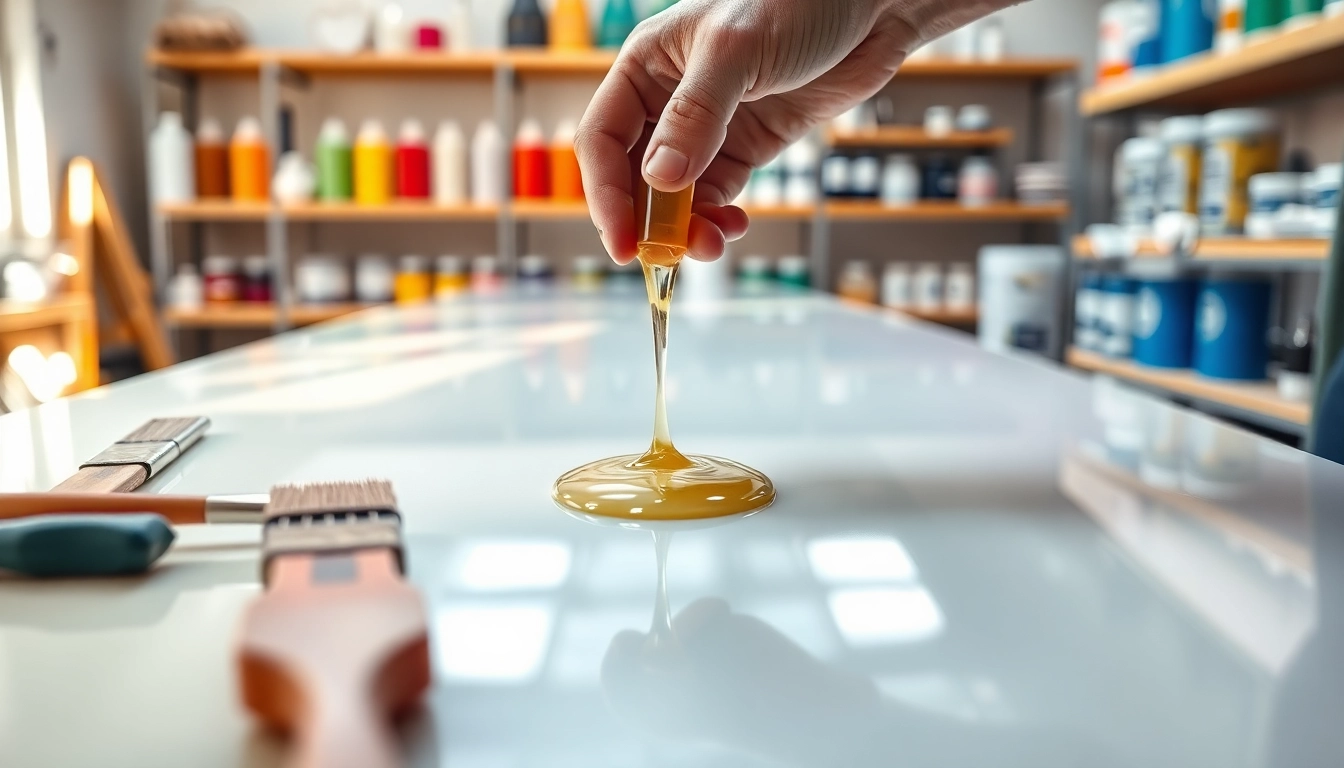Understanding Laminating Resin
Laminating resin is a type of polymer material widely used in manufacturing processes that require high strength and durability. It serves as a bonding agent, providing structural integrity to a variety of applications, particularly in industries like marine, aerospace, and automotive. The advantages of using laminating resin include its ability to create composite materials that can withstand challenging environments and loads. In this article, we will explore the definition, types, and applications of laminating resin, along with its numerous benefits, selection criteria, application techniques, and troubleshooting practices.
What is Laminating Resin?
Laminating resin is generally categorized as a thermosetting resin, meaning it hardens permanently when cured. It is typically composed of a resin system and a hardener. Upon mixing these components, a chemical reaction initiates that causes the resin to harden. This property makes laminating resin ideal for applications where strength and stability are crucial.
Types of Laminating Resin
There are two primary types of laminating resin: polyester and epoxy. Each has unique properties and applications:
- Polyester Laminating Resin: This type is known for its cost-effectiveness and is commonly used in marine applications, such as boat hulls. It is less durable than epoxy but offers good adhesion and quick curing times.
- Epoxy Laminating Resin: Epoxy resins are known for their superior strength, chemical resistance, and versatility. While they may cost more than polyester resins, their performance in demanding applications makes them a popular choice in industries like aerospace and high-performance automotive manufacturing.
Common Applications of Laminating Resin
Laminating resins find extensive use in various industries due to their essential properties:
- Marine Industry: Laminating resin is used to create durable and strong fiberglass boats and components.
- Aerospace: Used to bond composite materials in aircraft construction, contributing to weight reduction without compromising strength.
- Automotive: Employed in manufacturing lightweight components that enhance performance and fuel efficiency.
- Construction: Used in creating strong, lasting structures, including roofing and wall panels.
Benefits of Using Laminating Resin
Durability and Strength
One of the key benefits of laminating resin is its exceptional durability. This strength allows structures to withstand heavy loads and resist wear from environmental factors such as moisture and UV light. Whether it’s for marine vessels or construction panels, the resilience of laminating resin ensures longevity and reliability.
Cost Efficiency Compared to Alternatives
Choosing laminating resin over alternative materials often results in significant cost savings. Especially in high-volume applications like marine production, polyester laminating resin remains a budget-friendly choice. Additionally, the reduced need for maintenance and repairs contributes further to its economic advantages.
Versatility in Use
Laminating resin is remarkably versatile, suitable for a wide range of applications across numerous industries. This adaptability allows engineers and manufacturers to utilize the same material for diverse projects, simplifying inventory management and reducing complications associated with using multiple materials.
Choosing the Right Laminating Resin
Factors to Consider
When selecting the appropriate laminating resin for a specific application, several factors should be evaluated:
- Application Environment: Consider the conditions the laminated product will face, including exposure to moisture, chemicals, and temperature fluctuations.
- Strength Requirements: Determine the necessary tensile strength and load-bearing capacity based on the intended use of the product.
- Curing Time: Depending on project timelines, select a resin that cures quickly if required.
Comparing Polyester and Epoxy Laminating Resin
While both polyester and epoxy laminating resins offer benefits, their distinct characteristics can make one more suitable than the other based on specific needs:
- Polyester: Generally lower cost, suitable for quick projects. Ideal for situations where environmental factors are less severe.
- Epoxy: Higher cost but excels in demanding environments. Provides superior strength and moisture resistance.
Industry Standards and Certifications
When selecting a laminating resin, ensure it meets necessary industry standards and certifications, which can vary by region and application. These standards ensure that the materials used are reliable and safe, particularly in industries such as aerospace and marine.
Application Techniques for Laminating Resin
Preparation of Materials
Proper preparation is crucial for achieving the desired results when working with laminating resin. This includes cleaning surfaces to remove contaminants, and roughening the surface to promote adhesion. Additionally, following manufacturer specifications for mixing ratios of resin and hardener is essential for effective curing.
Step-by-Step Application Guide
Applying laminating resin involves several key steps:
- Measure and Mix: Carefully measure the correct proportions of resin and hardener, mixing thoroughly to avoid lumps or unreacted components.
- Apply Resin: Use a brush or roller to apply the resin evenly over the surface or into the fabric layers being used for reinforcement.
- Lay Fiberglass: Place fiberglass cloth over the area coated with resin, ensuring it is positioned correctly and without air bubbles.
- Repeat: For additional layers, apply another coat of resin and additional fiberglass as needed to achieve the desired thickness and strength.
- Cure: Allow the resin to cure completely according to the manufacturer’s instructions before moving to the next steps.
Post-application Curing Processes
Post-application, it’s crucial to follow the correct curing methodology to ensure optimal strength and adhesion. Factors influencing curing include ambient temperature, humidity, and the thickness of the applied layers. Ensuring proper ventilation during the curing process also helps in achieving the desired outcome.
Troubleshooting Common Issues with Laminating Resin
Identifying Common Mistakes
Even seasoned professionals can encounter issues when working with laminating resin. Common mistakes include improper mixing ratios, inadequate surface preparation, and environmental factors affecting curing. Being aware of these pitfalls can help in taking preventive measures.
Repairing Defects in Laminated Surfaces
Defects such as bubbles, cracks, or poor adhesion can occur. Simple repairs often involve sanding down the affected area followed by reapplication of resin. For deeper issues, a more thorough inspection and remediation may be required to ensure structural integrity.
Maintaining Quality Over Time
Long-term performance of laminating resin applications heavily relies on proper maintenance. Regular inspections for wear, proper cleaning methods, and controlled environmental conditions can significantly extend the life of laminated structures.
